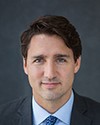Thank you.
There is a typo in my presentation, so in true form, I'll have to point it out.
Thank you, Mr. Chairman and honourable members of the committee. I want to thank you for this invitation which will allow me to speak to you today. If I may, I will continue my presentation in English. However, I will be happy to answer your questions in the official language of your choice.
The experience of the last dozen years or so should make it abundantly clear that the policy challenges posed by climate change are complex and have no quick and easy solution. With this in mind, I would argue that this bill represents an important step in articulating how Canada intends to approach these challenges in the post-Kyoto period.
I would like to draw your attention to four aspects of the proposed legislation that I see as particularly interesting. First, by specifying explicit emissions reductions commitments for 2020 and 2050, and by setting up a process to devise and update a series of five-year targets, the proposed legislation would reduce uncertainty about future policy directions. This in turn would lead to a more certain investment climate, thus allowing emitters better to plan both the turnover of the existing stock of physical capital and its expansion. There are clear benefits to such an approach, especially since much of this physical capital stock is long-lived.
Issues that arise in this context, however, are whether the emissions reductions identified are credible, in the sense of likely to be achieved, and whether Canada is indeed prepared to act sufficiently boldly and, as this proposed legislation would indicate, to do so irrespective of whether other major emitting countries also act. I will return to these issues later.
A second interesting aspect concerns the fact that Canada's commitments are now identified in terms of greenhouse gas emissions levels, a departure from the discourse on intensity targets of the last few years. This makes our commitments much more transparent and thus easier for Canadians to understand and assess. It also means that Canada's own objectives are now presented in a manner that is readily consistent with the way in which our obligations have been characterized in the Kyoto Protocol and seem likely to continue to be defined in the successor agreement.
Third, the explicit mention of market-based mechanisms in the list of measures that could be used to ensure that Canada meets its commitments and targets is an implicit recognition of the desirability of flexibility in response and of the associated cost implications. Indeed, one of the key benefits associated with the use of market-based mechanisms is that these leave much scope for choice by those best qualified to make that choice, the emitters themselves, as to whether or how to reduce their emissions. Overall, this flexibility will contribute to lowering costs of reducing greenhouse gas emissions by any given amount.
Although I will return to this later, allow me to mention now that it would have been useful if the proposed legislation had made explicit not only the need to track emissions reductions associated with specific measures, but also to consider the cost-effectiveness of these measures. Think of this as dollars spent per tonnes of emissions reduced.
Finally, roles and responsibilities assigned to a number of different parties mean that Canadians would have access to assessments and perspectives on policy direction and effectiveness from different sources. The minister, the National Round Table on the Environment and the Economy, and the Commissioner of the Environment and Sustainable Development have clearly identified roles with specific products that each is required to produce and to deliver within specified timeframes.
The proposed legislation also provides for these products to be public documents, and thus available for all Canadians to see and assess. However, this enhanced policy accountability framework would be meaningful only to the extent that the National Round Table and the commissioner have access to the resources, financial and other, necessary to fulfill the roles assigned to them. I also hope that the information generated by the National Round Table and the commissioner over time will influence both the determination of the revised five-year targets identified in subclause 6(2) and the choice of policy measures made by the government.
The reading of the bill also raised a number of questions in my mind. First, do Canadians appreciate the magnitude of the task underlying the emissions reduction commitments made in clause 5? For the sake of brevity, allow me to focus on the medium-term target of reducing annual emissions to a level 25% below that realized in 1990, and to achieve this by 2020. How does this compare to what Canada committed to do under the Kyoto Protocol?
As we all know, in 1997 Canada undertook to reduce annual emissions to 6% below 1990 levels, to be achieved, on average, between 2008 and 2012. This meant a cut of about 36 megatonnes in greenhouse gas emissions over a period of about 11 years. As we now know, we won’t get there.
By 2007, Canada’s emissions had risen by about 155 megatonnes and thus stood at about 125% of 1990 levels. The proposed legislation would thus require a cut of about 40% of 2007 emission levels by 2020. That’s what’s needed to reach the medium-term target identified in paragraph 5(b).
To simplify, let’s say that emissions in 2009 are equal to those in 2007. The proposed legislation would again require a 40% reduction in annual emissions to be attained over a period of about 11 years. In other words, in every year between 2010 and 2020, Canada would need, on average, to reduce emissions by 75% of the total amount of reductions that we had agreed to deliver under the Kyoto Protocol, reductions that we will fail to deliver by a wide margin.
So the question arises, are the commitments identified in clause 5 credible, in the sense, again, of being likely to be achieved? Will it prove possible to build a consensus among Canadians from coast to coast to coast to deliver the level of effort necessary to honour these commitments?
As noted earlier, there are in the proposed legislation few, if any, references to the issue of cost, either in terms of the cost of meeting emissions reduction targets, or the role of costs in determining these targets, or to the costs of different policy measures aimed at reducing emissions.
From an economics perspective, it can be argued that whatever targets are identified, the policy measures chosen should allow these targets to be met at the lowest possible cost. As noted earlier, the explicit mention of market-based mechanisms in subclause 10(1) gives reason to hope that cost concerns are implicit in the proposed legislation.
To the extent, however, that the application of such measures gives rise to side effects that are deemed undesirable, such as the imposition of unacceptably large burdens on low-income households, for example, then different policy measures should be directed at addressing these effects. In other words, design the market-based mechanisms to address the issue of emissions reductions and then, if necessary, direct other policy measures at any resulting undesirable effects.
One of the factors that arguably made it difficult to move forward with Canada’s commitments under the Kyoto Protocol was a concern about potential competitiveness effects. In terms of climate policy, it was argued, Canada could not get too far ahead of its main trading partners for fear of the negative international competitiveness effects that a more aggressive Canadian approach could have on domestic producers of goods and services.
Whatever one might think of the merits of this type of argument, it is unlikely to disappear as we move forward. This highlights the importance, from a domestic policy perspective, of the need for successful international negotiations on a successor to the Kyoto Protocol, the provisions of which would have to be broadly consistent with the Canadian commitments identified in the proposed legislation.
Given the discussions and debates of the last dozen years, it should also be clear that Canadian climate policy should be closely aligned with that adopted by the United States, by far and away our largest trading partner. The desirability, from Canada’s perspective, of a coordinated, if not integrated North American approach to climate policy, is not explicitly recognized in the proposed legislation. I do recognize, however, that it has been a thrust of the overall Government of Canada policy discourse in this area.
As noted earlier, policy clarity and credibility are necessary to reduce investment uncertainty. The proposed legislation identified explicit commitments in terms of Canadian emissions reductions and does so without reference to actions undertaken by other countries, including our main trading partners.
To avoid some of the problems that have characterized the period since the Kyoto Protocol was signed, let us hope that the ongoing international negotiations are successful, that their outcome is consistent with the commitments incorporated in the proposed legislation, and that the provisions of the latter prove closely aligned with the policy approach eventually adopted by the United States.
One could interpret the reference to a “just transition fund for industry” in subparagraph 10(1)(a)(iii) as expressing a willingness to address, among others, potential negative competitiveness effects that would be associated with measures implemented under this legislation. But I'm clearly reading between the lines here since the proposed legislation contains no description of this fund, nor does it identify its objectives, governance structure, or anything else for that matter.
Paragraph 7(1)(b) identifies a possible approach for allocating emissions reductions among provinces, which uses the Canada-wide commitments in clause 5 as the basis for provincial allocations. It's not clear to me what implications the statement in paragraph 7(1)(b) can have, since some of the provinces—Alberta, for example—have already acted on the basis that the regulation of greenhouse gas emissions within the boundaries of individual provinces is a matter of provincial jurisdiction. Within this context, it is difficult to see how the federal government could enforce the proposed approach to the allocation of emissions reductions across provinces. In the end, I suspect that even if this proposed legislation were to be adopted, the provincial allocation of Canada's emissions reductions and more generally the issue of compatibility between federal and provincial climate policy will remain issues of active concern in federal, provincial, and territorial relations.
As one final comment, paragraph 10(1)(b) and subparagraph 13(1)(b)(i) both mention the need to identify the emissions reductions that are expected to result from each of the measures adopted. It should be clear that this is not a simple accounting procedure since the effects of individual measures are not easily separable. Take the hypothetical case of the joint implementation of tradeable permits and mandated technology standards. It is quite possible that the reaction of some emitters to the introduction of tradeable permits would include adopting a technology consistent with the mandated standard. Full credit for the reductions cannot be assigned to both measures. Rather, the joint effects in terms of emissions reductions must be determined and then, if necessary, allocated across the two measures. More generally, interactions among measures aimed at emissions reductions will guarantee that the whole is less than the sum of its separately considered parts. Interactions of this kind must be taken into consideration when making projections of the potential effects of individual policy measures and assessments of their actual effectiveness.
Thank you very much for your attention, and again, apologies for the typo. I will be happy to answer your questions in the official language of your choice.












